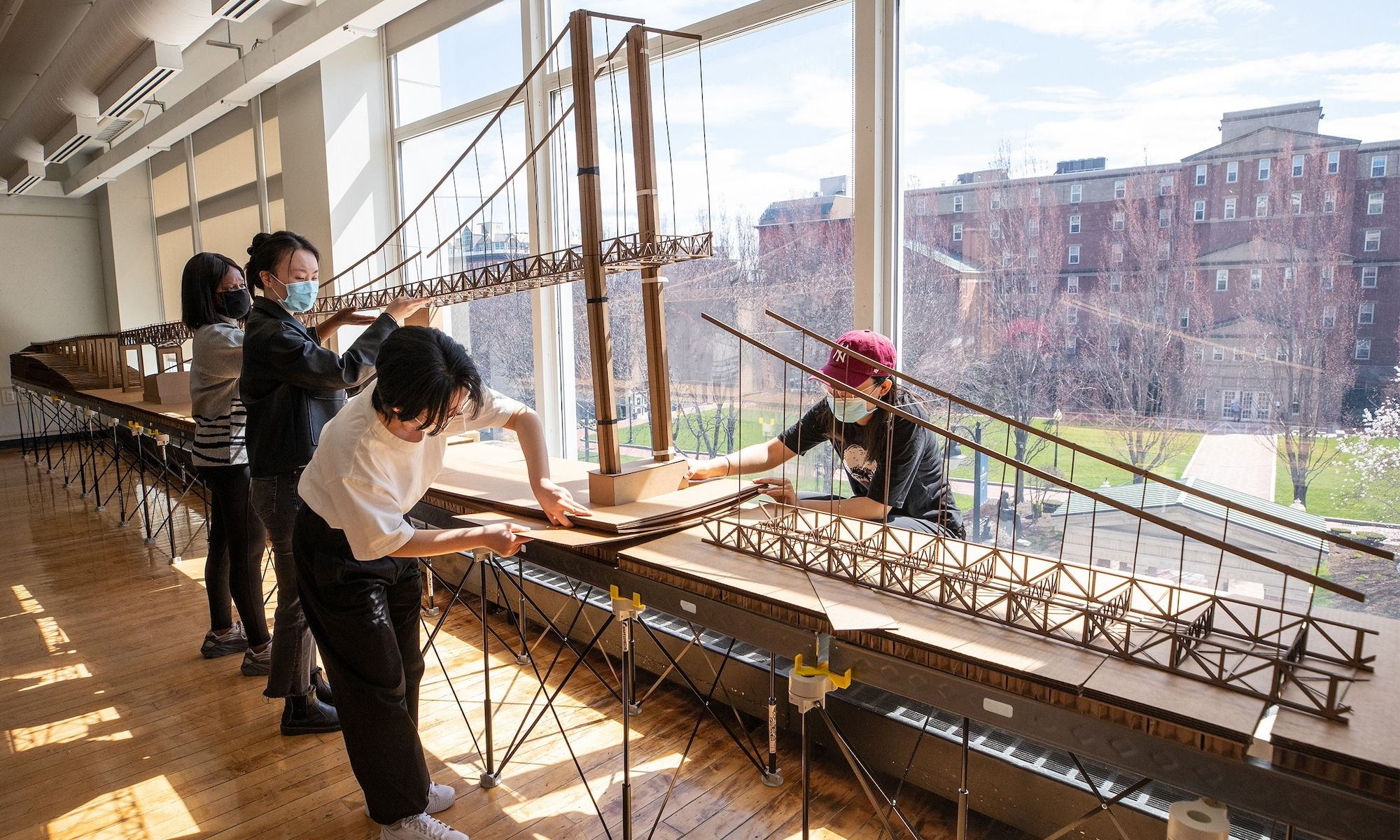In an Interior Architecture studio, students used technology to bring to life innovative designs for adding pedestrian and cycling lanes to the Pell Bridge in Newport, Rhode Island. Students began by creating a 3D model of the existing bridge structure Jo Sittenfeld/RISD
Recently, four global art and design schools were invited to join Sustainable Markets Initiative’s Terra Carta Design Lab, an initiative started by His Majesty King Charles III, in his former role as the Prince of Wales, and Jony Ive, which asks students and recent alumni to propose high-impact solutions to the climate crisis. Art and design schools might be a surprising source to mine for solutions to climate change, but at Rhode Island School of Design (RISD), we know that artists and designers are uniquely equipped to create new solutions to address the most pressing issues facing our world.
In the past, design was often seen or depicted as a specialised tool to transmit ideas and concepts or enable functionality, and artists were viewed as those who solely render the human experience and make us feel good or perhaps provoke questions about our collective endeavour. Even today, for many, art and design are thought to be fanciful or a luxury in light of the world’s significant challenges. But the opposite is true.
Early model that helped inspire the final design of housing in the the Olneyville building site in Providence, Rhode Island RISD
Art and design impact every facet of society, from culture to industry to politics. Every fabric you touch, every tool you use, every piece of clothing you wear, every film you watch, every building that shelters you, every sign that directs you, every public park you traverse, every video game you play, every book you read. Everything seen, heard, felt and read is the work of artists and designers. To put it simply: designers and artists play a central role in how we understand, shape, define and experience our world. And designers and artists, therefore, are uniquely positioned to help solve humanity’s most intractable problems. Not only do we enable, empower and illuminate the human experience, we imagine and enact it differently.
Too often, the people and communities most affected by the climate crisis are not included in developing the solutions that might solve it. But when artists and designers apply a question-based approach, use materials-based iteration and intellectual creativity, they make room to incorporate people with a variety of perspectives and experiences—an approach that creates new and more equitable interventions. To solve the climate crisis, vision, creativity and new thinking are not only important, but profoundly necessary.
In the Coexistence in Crisis studio, Pai Liu presents a map related to his team’s Ecotone Tectonics project Jo Sittenfeld/RISD
At RISD, we take an immersive, cross-disciplinary approach to the instruction of art and design. Curricula offer concept-driven, studio-based learning combined with critical studies in the liberal arts. Faculty teach our students to use empathy, ideation, iteration and experimentation to imagine new ways of being. In practice, this means our students hone their skills in hand-building, stippling and image-based storytelling as they read Immanuel Kant, Frantz Fanon, Toni Cade Bambara and Gloria Anzaldúa. They incorporate critical thinking while creating sculptures and performances that explore land histories, into paintings that use eco-friendly materials and graphic identities that speak specifically to culture and lived experience. Their ability to strategically eschew static ways of thinking, understand complex systems, relationships and situational contexts quickly is beneficial to addressing society’s most urgent and entrenched problems.
The value of this educational approach can be seen and felt tangibly across a range of contexts, including sustainability. RISD alumni build vessels to collect and use rainwater and our students design net-zero homes for communities in Providence. They reimagine and design transportation solutions that result in fewer emissions. Through our partnership with Hyundai Motor Group to explore mutuality, the future of spaces and sustainability strategies, and a collaboration with the University of Rhode Island to offer a joint programme to address coastal sustainability, RISD artists and designers are helping to lead the way toward a more environmentally sustainable future.
The Nature Conservancy commissioned this RainKeep water tank for the city of Chelsea, Massachusetts Allison Newsome
As a global effort, the Sustainable Markets Initiative’s Terra Carta Design Lab is an incredible opportunity for artists and designers to step into and up to one of the most pressing challenges of our lifetimes. Artists and designers ask crucial questions about how the world works and dream of how it might work better, and their instinct to elevate and include people, experiences and perspectives that have been historically under-represented will imbue new insights and discoveries into solutions that benefit us all.
At RISD, a place that harnesses material, visual and intellectual learning in service of the human project, we are thrilled to join this vision- and solutions-based endeavour focused on tackling the climate crisis from a different perspective, as only designers and artists can.
We are eager to see the unique and fresh perspectives that artists and designers bring to bear on projects for this initiative, perspectives that are essential to creating a future of which we all want to—and can—be a part.

